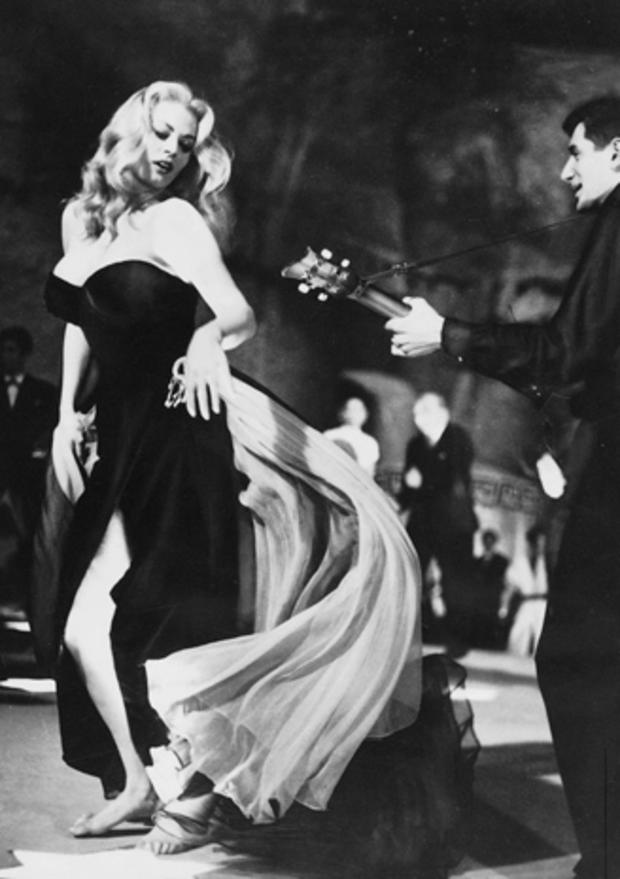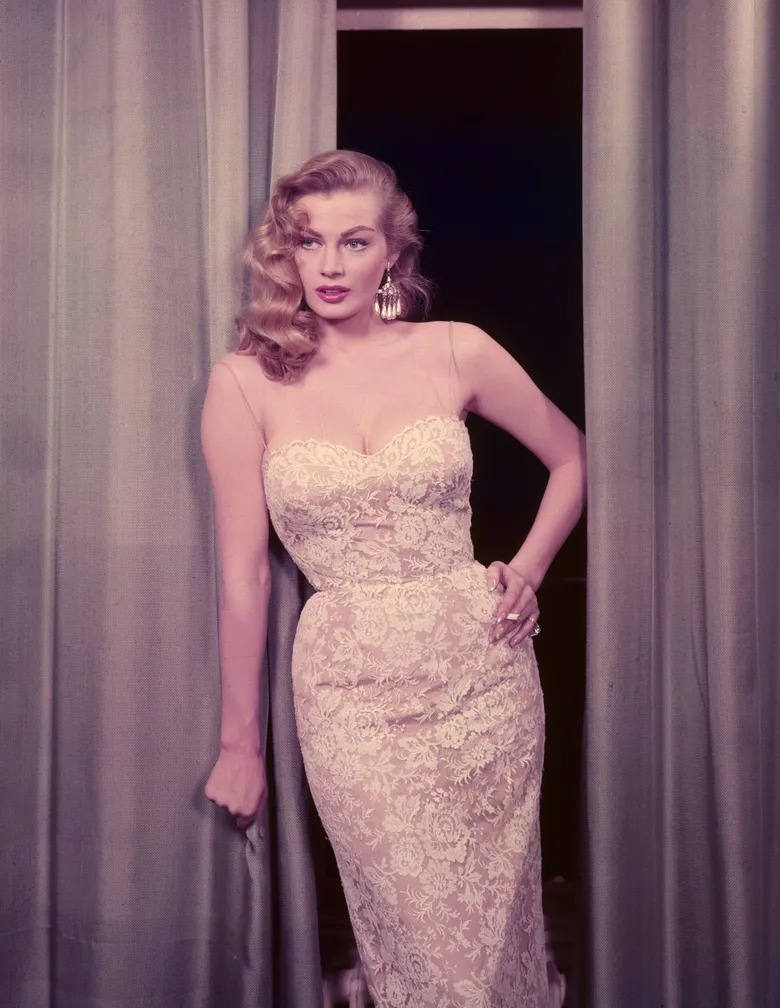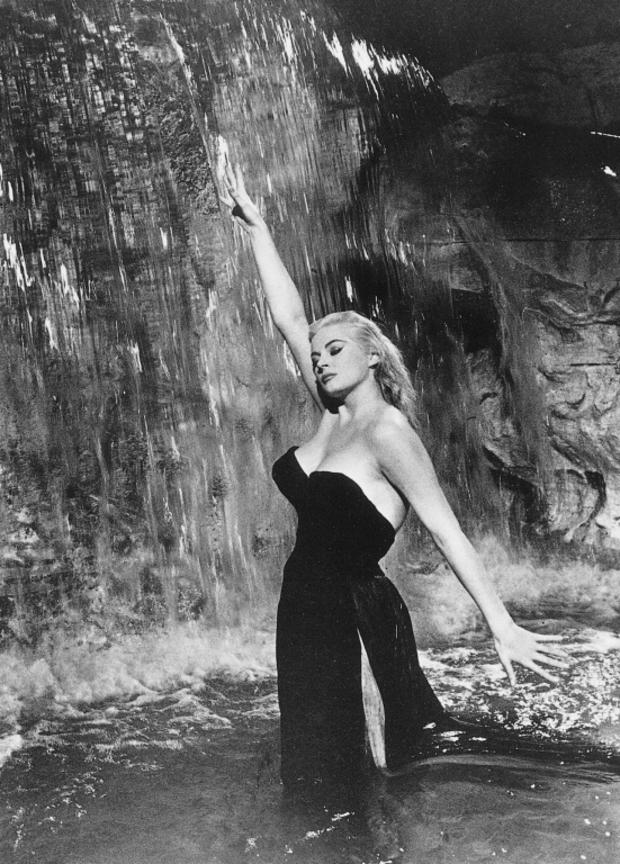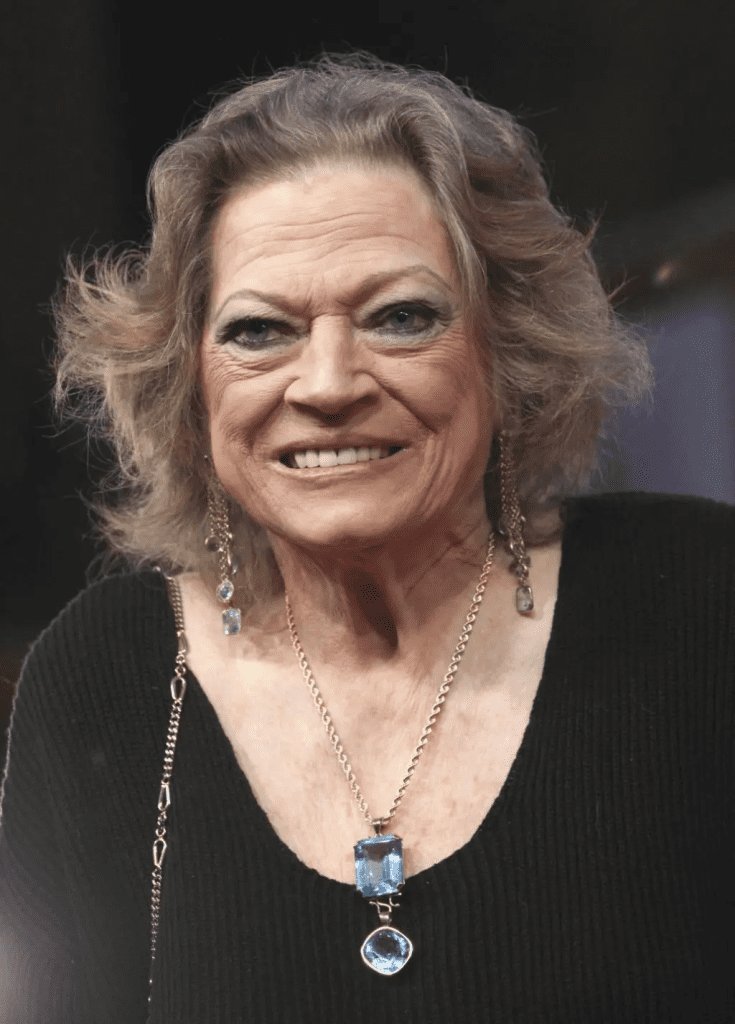Anita Ekberg, the Swedish-born actress whose dazzling beauty and magnetic screen presence defined Hollywood’s golden age, remains an icon even years after her passing. Her journey from Malmö, Sweden, to international stardom is the stuff of legend. Known for her sensual elegance and unforgettable performances, Ekberg became a cinematic goddess, leaving a legacy that continues to resonate in the film world.
Her most famous moment? Wading through Rome’s Trevi Fountain in La Dolce Vita, a scene that cemented her as a cultural icon. But Ekberg’s story goes beyond one iconic scene—it’s a tale of talent, determination, and an allure so unique that comedian Bob Hope once joked her parents deserved a Nobel Prize in architecture.
The Rise of a Hollywood Starlet

Born on September 29, 1931, in Malmö, Sweden, Anita Ekberg’s life changed forever when she won the title of Miss Sweden in 1951. This victory led her to America for the Miss Universe pageant, where, despite not clinching the crown, her statuesque beauty caught the attention of Hollywood scouts.
Ekberg’s modeling career soon transitioned into acting roles, with early credits in films like Take Me to Town and Abbott and Costello Go to Mars. These parts may have been small, but they laid the foundation for her journey to becoming one of Hollywood’s most unforgettable stars.
The Sensational Sylvia: La Dolce Vita
Anita Ekberg achieved international fame as Sylvia in Federico Fellini’s 1960 masterpiece, La Dolce Vita. Her character, a glamorous movie star who enchants Marcello Mastroianni’s journalist, captured the essence of an era defined by decadence and allure.
The Trevi Fountain scene remains one of cinema’s most iconic moments. Dressed in a flowing black gown, Ekberg playfully wades through the fountain, her confidence and charisma radiating through the screen. Filming the scene in the chilly waters of February was grueling—Ekberg later admitted she couldn’t feel her legs by the end of the shoot—but the result was pure magic.
Fellini’s La Dolce Vita not only immortalized Ekberg’s beauty but also showcased her talent, proving she was more than just a pretty face.
A Diverse Filmography: Beyond the Glamour
While La Dolce Vita is her most celebrated role, Ekberg’s career spanned decades, with performances in a wide range of genres.
- Musical Comedy: In Artists and Models (1955), Ekberg starred alongside Dean Martin and Jerry Lewis, bringing charm and humor to the screen.
- Action and Thrillers: Films like Pickup Alley (1957) and Zarak (1956) showcased her versatility, as she tackled more dramatic roles.
- Westerns: Ekberg proved her mettle in the genre with Valerie (1957), where she starred opposite Sterling Hayden in a gripping tale of love and betrayal.
- Comedy and Camp: Later in her career, Ekberg embraced lighter roles, such as in Call Me Bwana (1963) with Bob Hope, blending her beauty with comedic timing.
Her ability to adapt to various roles demonstrated her range as an actress, even as her stunning looks often overshadowed her talent.
The Cultural Impact of Anita Ekberg

Ekberg’s impact extended beyond the silver screen. She embodied the glamour and sophistication of mid-20th-century Hollywood, becoming a symbol of European elegance in an American-dominated industry.
Bob Hope’s famous quip about her beauty exemplified the way she captivated audiences and critics alike. She wasn’t just admired; she was adored, a larger-than-life figure who brought an air of mystery and excitement wherever she went.
A Reflective Later Career
In her later years, Ekberg stepped away from Hollywood’s spotlight, choosing instead to live a quieter life in Italy, the country that had embraced her as its own. Her occasional roles, such as her appearance in Fellini’s Intervista (1987), allowed her to reflect on her remarkable career with grace and wit.
Despite the challenges that came with aging in an industry obsessed with youth, Ekberg maintained her poise and humor. She often joked about her beauty, acknowledging its role in her success but never letting it define her completely.
The Iconic Trevi Fountain Scene: A Moment of Magic

It’s impossible to talk about Anita Ekberg without revisiting the Trevi Fountain scene. The image of Sylvia beckoning Marcello into the water has been endlessly parodied, celebrated, and referenced in pop culture.
For Ekberg, the scene was both a blessing and a curse. While it cemented her place in cinematic history, it also overshadowed the breadth of her career. “I’ve seen it too many times,” she once remarked, though she admitted, “It was beautiful at the time.”
Anita Ekberg’s Enduring Legacy
When Anita Ekberg passed away in Rome on January 11, 2015, at the age of 83, it marked the end of an era. Her death was a poignant moment for fans who had been captivated by her beauty, charm, and talent.

Today, Ekberg’s legacy lives on through her films and the cultural moments she helped create. She remains a symbol of a time when Hollywood glamour ruled, and her work continues to inspire actresses who seek to balance beauty with substance.
Conclusion
Anita Ekberg was more than just a screen siren—she was a force of nature, a trailblazer who brought sophistication, humor, and depth to every role she played. From her early days as a beauty queen to her unforgettable performance in La Dolce Vita, Ekberg captivated audiences with her charm and talent.
Her story is one of resilience, grace, and a touch of mystery—a reminder of the golden age of cinema and the enduring power of true star quality. Whether you remember her as Sylvia in the Trevi Fountain or as the witty woman who embraced her fame with a smile, Anita Ekberg’s place in Hollywood history is forever secure.


